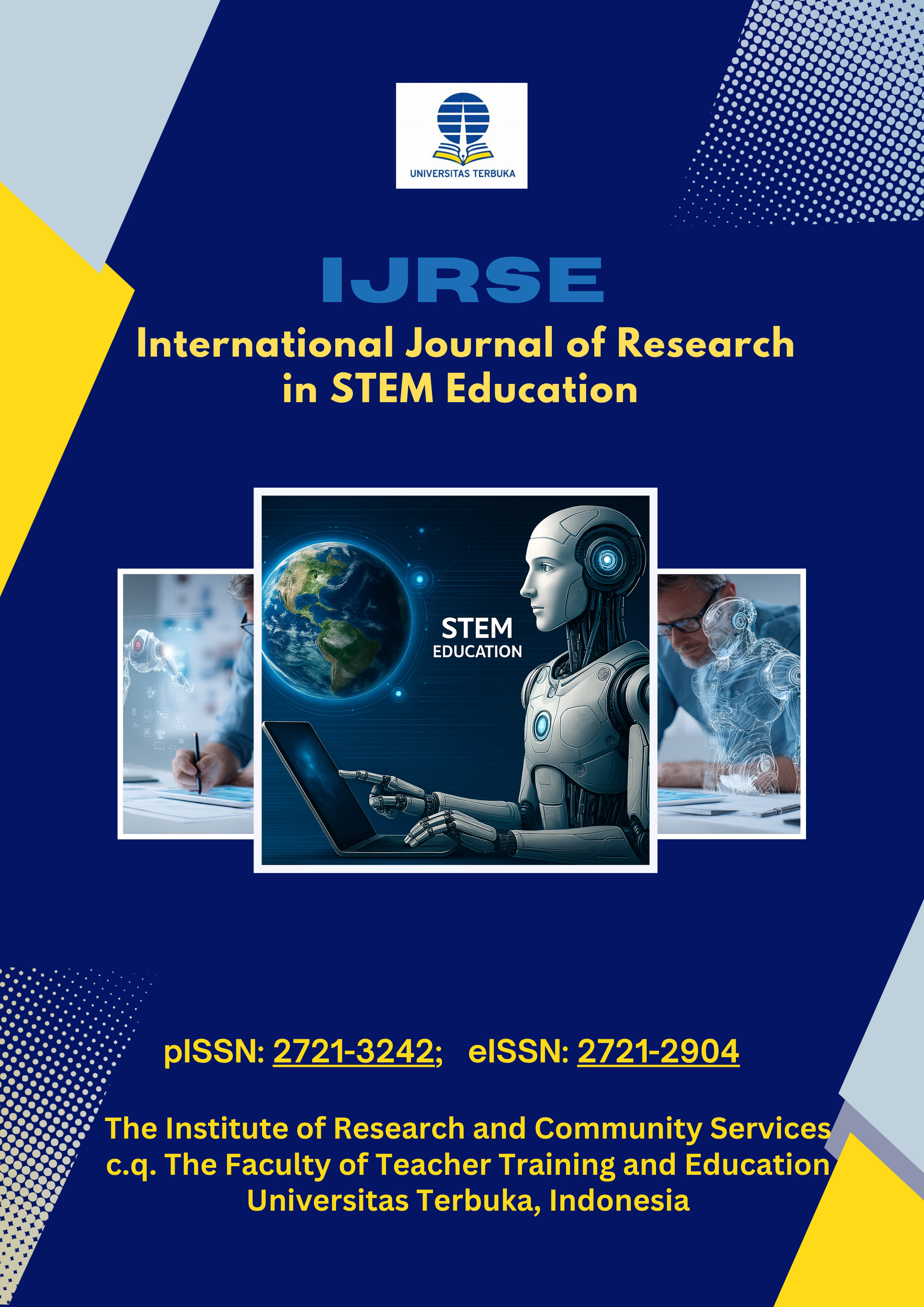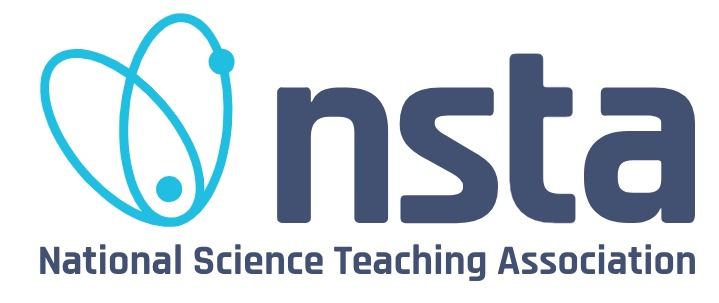Computer Assisted Learning for Enhancing Mastery of Concepts in Science
DOI:
https://doi.org/10.33830/ijrse.v2i2.382Keywords:
Computer-Assisted Learning, Learners, Achievement Test, Science Concepts, UniversitiesAbstract
This study examined the effects of Computer Assisted Learning (CAL) on the mastery of Science concepts by learners in universities. Teaching and learning of Science concepts present learners with numerous challenges. Of critical concern is the negative perception by learners that Science based subjects are difficult, thus contributing to widespread poor performance by the learners in the national examinations and subsequently poor choice of the subject in the universities. Solomon Four Group experimental design was employed for the study. The target population comprised all first-year students taking science subjects in 8 universities in western Kenya. A sample size of 335 students was determined using Krejcie & Morgan table (1970). The universities were divided into two forming experimental and control groups.  The study was carried out in 4 months spanning 16 weeks where pretest was administered after the first 8 weeks of conventional teaching and post-test administered after the next 8 weeks of treatment. Pretest and post-test Science Achievements Test (SAT) on two topics, digestive system and light and optics, were designed and administered by the respective lecturers, and scores recorded. Piloting was carried before the use of the instruments, and a reliability coefficient of 0.85 on SAT was recorded.  Data were analyzed using t-test one-way ANOVA. The study found that 171 students taught using CAL achieved significantly higher scores in SAT compared to164 students taught through conventional methods with a mean gain of 2.851. The study demonstrated that CAL enhanced active manipulation of content and promoted interaction with content, and gave reality to abstraction. The study may be significant to educationists, lecturers, researchers, and policy makers as it provides insight on the benefits of applying Computer Assisted Learning in Science Education.ÂÂ
References
Abrahams, I., & Reiss, M. J. (2012). Practical work: Its effectiveness in primary and secondary schools in England. Journal of Research in Science Teaching, 49(8), 1035– 1055.
Abudu, K.A. & Gbadamosi, M.R. (2014). Relationship between teacher’s attitudes and learner academic achievement in senior secondary school chemistry. A case study of 126 Ijebu-Ode and Odgbolu Local Government area of Ogun State. Wudpecker Journal of Educational Research, 3(3):35-43
Ainley, J., & Engers, L. (2007). Learner use of, and engagement with, information technology. Curriculum Corporation. https://research.acer.edu.au/digital_learning/11
Andae, G. (2019). KCPE scores drop on the back of low marks in Science. Business Daily. Retrieved from https://www.businessdailyafrica.com/news/KCPE-scores-drop/539546-5353786-n298x7/index.html
Bayrak, B. K. & Bayram, H. (2010). The effect of computer aided teaching method on the learners’academic achievement in the Science and technology course. Procedia Social and Behavioral Sciences. 9. 235–238
Ben-Ari, M. (2001). Constructivism in computer Science education. Journal of Computers in Mathematics and Science Teaching, 20(1), 45-73.
Black, T.R., Atwaruâ€ÂOkello, D., Kiwanuka, J., Serwadda, D., Birabi, O., Malinga, F., Biumigishu, A., & Rodd, A. (1998). Science education in Uganda: progress and possibilities. International Journal of Science Education. 20(2). 239-252. https://doi.org/10.1080/0950069980200208
Bond, M., & Bedenlier, S. (2019). Facilitating Learner Engagement Through Educational Technology: Towards a Conceptual Framework. Journal of Interactive Media in Education, 2019(1): 11, pp. 1–14. DOI: https://doi.org/10.5334/jime.528
Bryson, C., & Hand, L. (2007). The role of engagement in inspiring teaching and learning. Innovations in Education and Teaching International. 44(4). 349-362. doi: 10.1080/14703290701602748
Buindi, B. (2013). Kenya Certificate of Secondary Education, Examination Results Released by Minister of Education. Daily Nation, Nairobi: Nation Media Group Ltd.
Cakiroglu, U., & Yilmaz, H (2017) Using Videos and 3D Animations for Conceptual Learning in Basic Computer Units. Contemporary Educational Technology. 8(4), 390-405 390,
Carmichael, E., & Farrell, H. (2012). Evaluation of the Effectiveness of Online Resources in Developing Student Critical Thinking: Review of Literature and Case Study of a Critical Thinking Online Site. Journal of University Teaching and Learning Practice, 9(1), 4.
CEMASTEA (2017). Revealed: The Force Behind Learners’ Performance in Science Subjects. Retrieved From https://www.cemastea.ac.ke/index.php/component/k2/item/236-revealed-the-force-behind-learners-performance-in-Science-subjects
Dina, T., Ciornei, S. (2013). Education Facing Contemporary World Issues the Advantages and Disadvantages of Computer Assisted Language Learning and Teaching for Foreign Languages. 5th International Conference EDU-WORLD 2012. Procedia - Social and Behavioral Sciences. 76(2013). 248 – 252 doi: 10.1016/j.sbspro.2013.04.107
Fafchamps, M., & Mo, D. (2018). Peer effects in computer assisted learning: evidence from a randomized experiment. Exp Econ. (21) 355–382. https://doi.org/10.1007/s10683-017-9538-z
Galang, N. M., & Galang, E. G. (2017). Computer Aided Tool in Science for Kindergarten Pupils. Computer Science and Engineering. 7(2): 45-51. DOI: 10.5923/j.computer.20170702.02
Hamilton, M., Mahera, W.C., Mateng’e, F.J., & Machumu, M.M. (2010). A needs assessment study of Tanzania Science education. Dar es Salaam, Tanzania: The Economic and Social Research Foundation
Hennessy, S., Wishart, J., Whitelock, D., Deaney, R., Brawn, R., Velle, L., McFarlane, A., Ruthven, K., Winterbottom, M. (2007). Pedagogical approaches for technology-integrated Science teaching. Computers & Education. 48.137-152.
Hopson, M. H., Simms, R. L., &. Knezek, G. A. (2001). Using a Technology-Enriched Environment to Improve Higher-Order Thinking Skills. Journal of Research on Technology in Education. 34(2). 109-119.
Jesuraja, B. (2015). Importance of Computer Assisted Teaching & Learning Methods for Chemistry. Science Journal of Education. Special Issue: Science Learning in Higher Education. 3(4-1).11-16. doi: 10.11648/j.sjedu.s.2015030401.13
Keengwe, J., & Onchwari, G. (2008). Computer technology integration and learner learning: Barriers and promise, Journal of Science Education and Technology. 17:560-565.
Kibet, K., Mbugua, Z.K., Muthaa, G.M. & Nkonke, G.R. (2012). Factors contributing to learners’ poor performance in Mathematics at Kenya Certificate of secondary education in 130 Kenya: A case of Baringo County, Kenya. American International Journal of Contemporary Research. 2(6):87-91
Kothari R, (2004). Research methodology; methods and techniques. New Delhi, K.K Gupta
Krejcie R. V. & Morgan D. W. (1970). Educational and Psychological Measurement. 30, 607-610.
Majo, S., (2016). Factors Influencing Poor Performance in Science Subjects in Secondary Schools in Shinyanga Municipality, Munich, GRIN Verlag, https://www.grin.com/document/383487
Maltese, A.V., & Tai, R.H. (2011). Pipeline persistence: Examining the association of educational experiences with earned degrees in STEM among U.S students. New Jersey: Wiley Periodicals, Inc. 22
Millar, R. (2004). The role of practical work in the teaching and learning of Science. Paper prepared for the meeting: High school Science laboratories: Role and vision. Washington, D.C.: National Academy of Sciences.
Muzah, P. (2011). An exploration into the school-related factors that cause high matriculation failure rates in Physical Science in public high schools of Alexandra Township. Unpublished Master of Education dissertation. Pretoria: University of South Africa.
Mynbayeva, A., & Sadvakassova, Z., & Bakhytkul Akshalova, B. (2017). Pedagogy of the Twenty-First Century: Innovative Teaching Methods, New Pedagogical Challenges in the 21st Century - Contributions of Research in Education, Olga Bernad Cavero and Núria Llevot-Calvet, IntechOpen, DOI: 10.5772/intechopen.72341. Available from: https://www.intechopen.com/books/new-pedagogical-challenges-in-the-21st-century-contributions-of-research-in-education/pedagogy-of-the-twenty-first-century-innovative-teaching-methods
OECD (2016). Programme for International Learner Assessment (PISA) Result from PISA 2015.
Olatunde, Y. P. (2009). Learners' attitudes towards Sciences and academic achievement in some selected secondary schools in Southwestern, Nigeria. European Journal of Scientific Research, 36: 336-341.
Omondi, O.J., (2013). Factors Influencing the Choice of Science Subjects in Kenya’s Secondary Schools: A Case Study of Langata High School in Nairobi County. Unpublished post diploma research project. University of Nairobi. Nairobi. Kenya
Sahin, S. (2006). Computer simulations in Science education: Implications for Distance Education. Turkish Online Journal of Distance Education. 7(4)
Sharma, R. (2017). Computer Assisted Learning – A Study. International Journal of Advanced Research in Education & Technology. 4(2). 102-105
Solomon, R. L. (1949). An extension of control group design. Psychological Bulletin, 46, 137–150.
Sweller, J. (1988). Cognitive Load During Problem Solving: Effects on Learning. Cognitive Science. 12 (2): 257–285. CiteSeerX 10.1.1.459.9126. doi:10.1207/s15516709cog1202_4.
Sweller, J. (2012). Human cognitive architecture: Why some instructional procedures work and others do not. In K. Harris, S. Graham & T. Urdan (Eds.), APA educational psychology handbook. 1. 295– 325). Washington, DC: American Psychological Association.
Sweller, J., Ayres, P., & Kalyuga, S. (2011). Cognitive load theory. NY: Springer.
Tareef, A. B. (2014). The Effects of Computer-Assisted Learning on the Achievement and Problem-Solving Skills of the Educational Statistics Learners. European Scientific Journal. 10(2). 271-279
Troisi, J.D. (2014). Making the grade and staying engaged: The influence of learner management teams on learner classroom outcomes. Teaching of Psychology. 41(2), 99-103. doi:10.1177/0098628314530337
U.S. Department of Education (2017). Reimagining the Role of Technology in Education: National Education Technology Plan Update. Washington, D.C.
UNESCO (2012). ICT in Primary Education Analytical survey. UNESCO Institute for Information Technologies in Education
UNESCO. (2005). Towards knowledge societies. UNESCO.
Downloads
Published
How to Cite
Issue
Section
License
Copyright (c) 2020 Sharon Anyango Onditi, Stephen Oloo Ajwang

This work is licensed under a Creative Commons Attribution-NonCommercial 4.0 International License.
Content Licensing, Copyright, and Permissions
1. License
International Journal of Research in STEM Education (IJRSE) adopts the Creative Commons Attribution-NonCommercial 4.0 International License (CC BY-NC 4.0) as the optimal license for the publication, distribution, use, and reuse of scholarly works for non-commercial purposes.
The non-commercial use of the article will be governed by this license, which allows others to share and adapt the work provided proper attribution is given to the author(s) and the journal.
Creative Commons Attribution-NonCommercial 4.0 International License.
Creative Commons License: CC BY-NC 4.0
2. Author's Warranties
The author warrants that the article is original, written by the stated author(s), has not been published before, contains no unlawful statements, does not infringe the rights of others, is subject to copyright vested exclusively in the author, is free of any third-party rights, and that all necessary written permissions to quote from other sources have been obtained by the author(s).
3. User Rights
The International Journal of Research in STEM Education aims to disseminate published articles as freely as possible. Under the Creative Commons license, users are permitted to copy, distribute, display, and perform the work for non-commercial purposes only, provided that proper attribution is given to the author(s) and this journal.
4. Rights of Authors
Authors retain the following rights:
- Copyright and proprietary rights related to the article, such as patent rights.
- The right to use the substance of the article in future works (e.g., lectures, books).
- The right to reproduce the article for personal purposes.
- The right to self-archive the article.
- The right to enter into separate, additional non-exclusive contractual arrangements for the distribution of the article’s published version (e.g., posting to an institutional repository or publishing it in a book), with acknowledgment of its initial publication in IJRSE.
If the author has a non-exclusive publishing contract with another publisher under a more restrictive license, the author still retains all rights to republish or distribute the work elsewhere, including commercially, as the author is not bound by the license conditions imposed on the journal.
5. Co-Authorship
If the article has multiple authors, the signatory of this agreement warrants that he/she has been authorized by all co-authors to sign this agreement on their behalf and agrees to inform all co-authors of the terms of this agreement.
6. Termination
This agreement may be terminated by either the author or IJRSE with two months’ notice if the other party has materially breached this agreement and failed to remedy such breach within one month after receiving written notice.
No breach or violation of this agreement will cause automatic termination or affect the license granted to IJRSE.
7. Royalties
This agreement entitles the author to no royalties or other fees. To the extent legally permissible, the author waives the right to collect royalties in respect of any use of the article by IJRSE or its sublicensees.
8. Miscellaneous
IJRSE will publish the article (or have it published) once the editorial process has been successfully completed.
The journal reserves the right to edit the article for style, punctuation, spelling, capitalization, referencing, and consistency as deemed appropriate.
The author acknowledges that the article will be made publicly accessible, and such access will be free of charge for readers.








